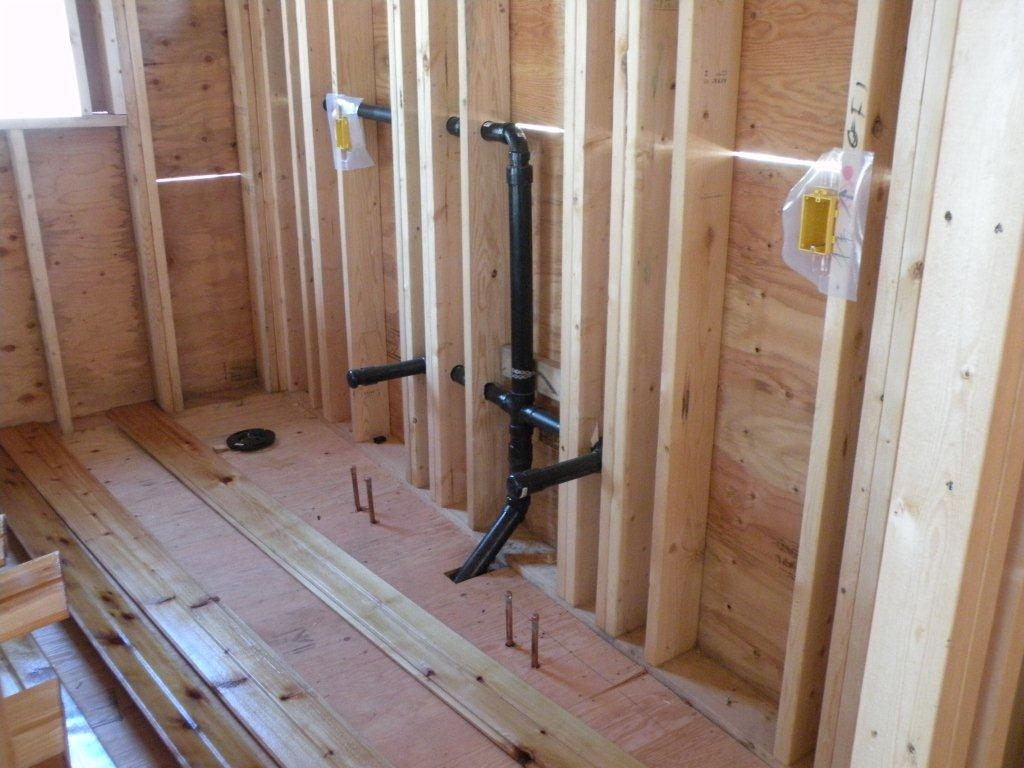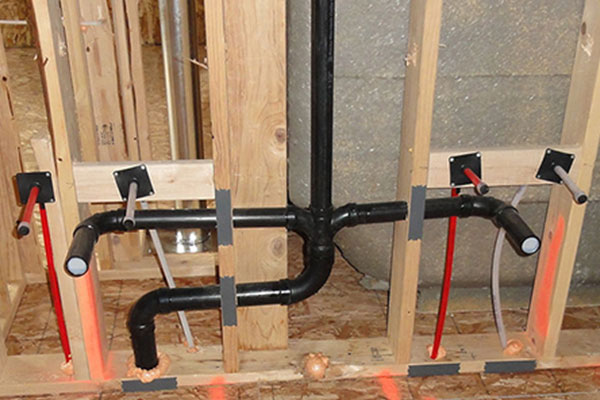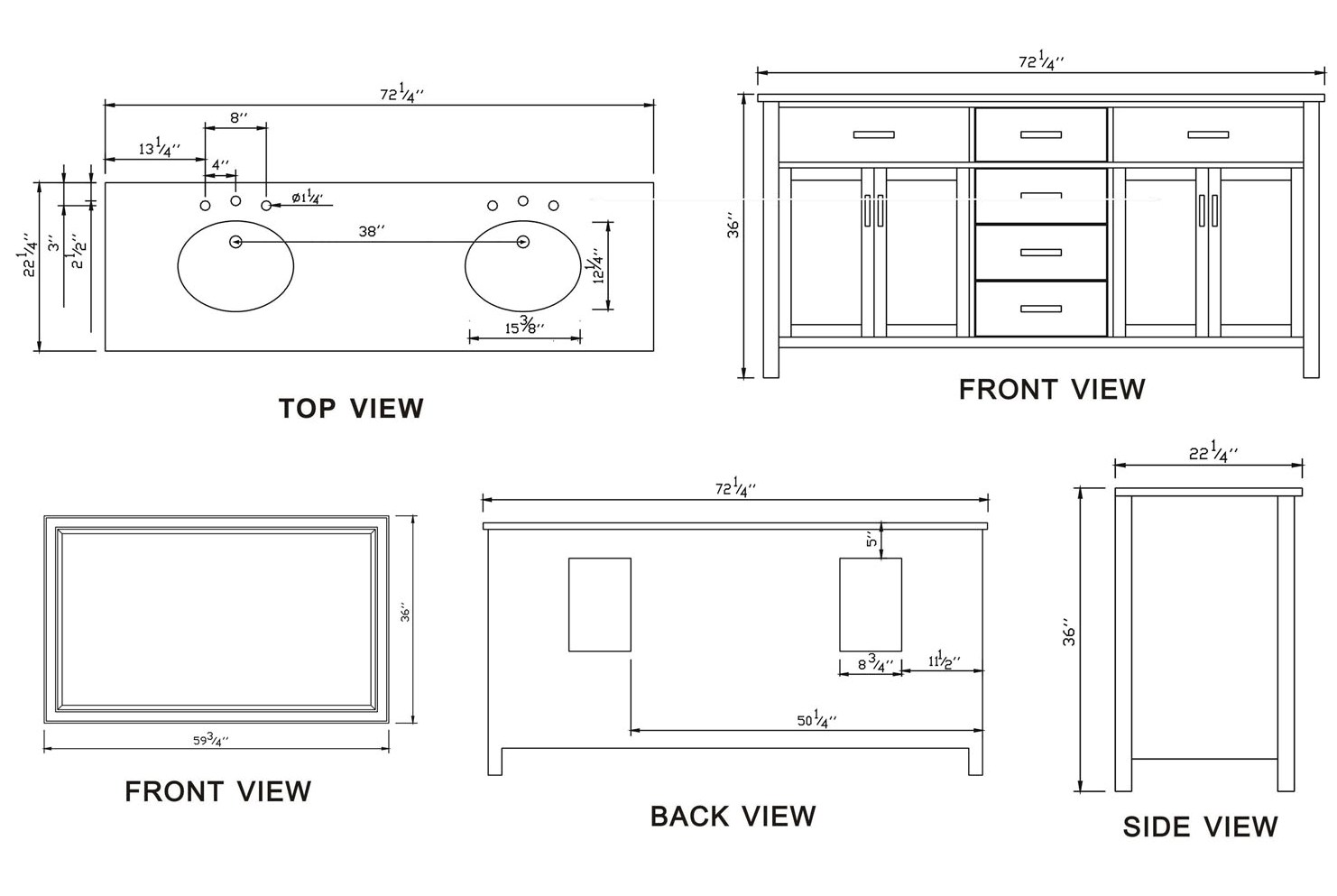When it comes to installing a new bathroom vanity, one of the most important considerations is the plumbing rough in height. This refers to the placement of the pipes and drain that will connect to your vanity's plumbing fixtures, such as the sink and faucet. Getting the rough in height right is crucial for ensuring proper functionality and avoiding any costly plumbing mistakes. In this article, we'll discuss everything you need to know about the bathroom vanity plumbing rough in height. Bathroom Vanity Plumbing Rough In Height: What You Need to Know
While there are no specific building codes that dictate the exact rough in height for bathroom vanity plumbing, there are some general guidelines that can help you determine the appropriate height for your space. Generally, the standard rough in height for a bathroom vanity is around 21 inches from the floor to the center of the drain. However, this can vary depending on the size and style of your vanity, as well as your personal preferences. Bathroom Vanity Plumbing Rough In Height Requirements
To determine the specific rough in height for your bathroom vanity, you will need to consider the dimensions of your vanity and the plumbing fixtures that will be installed. For example, if you have a taller vanity, you may need a higher rough in height to accommodate the added height of the sink and faucet. Additionally, the placement of your plumbing pipes and drain may also affect the rough in height, so it's important to consult with a professional plumber or refer to your vanity's installation manual for specific measurements. Bathroom Vanity Plumbing Rough In Dimensions
When measuring for your bathroom vanity plumbing rough in height, it's important to take precise measurements to ensure that everything fits properly. Start by measuring the distance from the floor to the center of the drain, as this will be the main reference point for your rough in height. Then, measure the height of your vanity and the placement of your plumbing pipes and drain to determine the exact rough in height needed. It's always a good idea to double check your measurements before beginning any installation work. Bathroom Vanity Plumbing Rough In Measurements
In addition to the rough in height, there are several other specifications that you should consider when planning your bathroom vanity plumbing. These include the rough in distance from the wall, the rough in diameter of the pipes, and the rough in depth of the drain. These specs can vary depending on the type of plumbing fixtures you are using, so be sure to consult with a professional or refer to your installation manual for accurate measurements. Bathroom Vanity Plumbing Rough In Specs
While there are no strict guidelines for bathroom vanity plumbing rough in height, there are some general recommendations that can help you achieve the best results. For example, it's important to maintain a minimum clearance of 4 inches between the top of the vanity and the bottom of any wall-mounted fixtures, such as a mirror or light fixture. Additionally, you should consider the placement of any nearby electrical outlets or plumbing pipes when determining the rough in height to avoid any potential conflicts. Bathroom Vanity Plumbing Rough In Guidelines
When it comes to installing bathroom vanity plumbing, there are some industry standards that are recommended for optimal functionality and aesthetics. These include maintaining a minimum of 15 inches between the center of the drain and the edge of the vanity, as well as a minimum of 18 inches between the center of the sink and any adjacent walls. These standards may vary slightly depending on the size and style of your vanity, so it's always a good idea to consult with a professional plumber for personalized recommendations. Bathroom Vanity Plumbing Rough In Standards
While there are no specific building codes for bathroom vanity plumbing rough in height, it's important to ensure that your installation meets all relevant plumbing codes and regulations. This not only ensures the safety and functionality of your plumbing system, but it can also prevent any potential issues or costly repairs down the line. If you are unsure about any specific plumbing codes or regulations in your area, be sure to consult with a professional plumber for guidance. Bathroom Vanity Plumbing Rough In Code
To help you better understand the bathroom vanity plumbing rough in height, here is a simple diagram that illustrates the basic measurements and specs that should be considered when planning your installation: Bathroom Vanity Plumbing Rough In Diagram

The layout of your bathroom vanity plumbing rough in will ultimately depend on the design and placement of your vanity and fixtures. However, there are a few general guidelines that can help you achieve the best results. For example, it's recommended to have the sink centered on the vanity and aligned with the center of the drain. Additionally, the hot and cold water supply lines should be placed on either side of the drain, and the drain should be positioned in the center of the vanity's depth. Bathroom Vanity Plumbing Rough In Layout
The Importance of Proper Bathroom Vanity Plumbing Rough In Height

Why is it Important?
 When it comes to designing a functional and aesthetically pleasing bathroom, every detail matters. This includes the
plumbing rough in height
for your
bathroom vanity
. While it may seem like a small detail, the proper placement of your vanity's plumbing can make a big difference in the overall functionality and design of your bathroom.
When it comes to designing a functional and aesthetically pleasing bathroom, every detail matters. This includes the
plumbing rough in height
for your
bathroom vanity
. While it may seem like a small detail, the proper placement of your vanity's plumbing can make a big difference in the overall functionality and design of your bathroom.
What is Plumbing Rough In Height?
 Plumbing rough in height
refers to the distance from the floor to the center of the drain for your bathroom vanity. This measurement is crucial because it determines where your sink and faucet will be placed. If the rough in height is too high or too low, it can cause problems with the installation of your vanity and make it difficult to use.
Plumbing rough in height
refers to the distance from the floor to the center of the drain for your bathroom vanity. This measurement is crucial because it determines where your sink and faucet will be placed. If the rough in height is too high or too low, it can cause problems with the installation of your vanity and make it difficult to use.
The Ideal Height
 The
ideal plumbing rough in height
for a bathroom vanity is typically between 21-23 inches. This measurement ensures that the sink and faucet are at a comfortable and functional height for most individuals. It also allows for enough space underneath the sink for plumbing pipes and storage.
The
ideal plumbing rough in height
for a bathroom vanity is typically between 21-23 inches. This measurement ensures that the sink and faucet are at a comfortable and functional height for most individuals. It also allows for enough space underneath the sink for plumbing pipes and storage.
Considerations for Your Bathroom Vanity Plumbing Rough In Height
 While the recommended rough in height for a bathroom vanity is 21-23 inches, there are a few factors to consider when determining the specific height for your space. First, the height of the individuals using the vanity should be taken into account. If you or someone in your household is taller or shorter than average, you may need to adjust the plumbing rough in height accordingly.
Secondly, the type of sink and faucet you choose can also affect the rough in height. For example, a vessel sink typically sits higher than an undermount sink, so the rough in height may need to be adjusted accordingly. Additionally, if you opt for a wall-mounted faucet, the rough in height will need to be lower to accommodate for the faucet's placement.
While the recommended rough in height for a bathroom vanity is 21-23 inches, there are a few factors to consider when determining the specific height for your space. First, the height of the individuals using the vanity should be taken into account. If you or someone in your household is taller or shorter than average, you may need to adjust the plumbing rough in height accordingly.
Secondly, the type of sink and faucet you choose can also affect the rough in height. For example, a vessel sink typically sits higher than an undermount sink, so the rough in height may need to be adjusted accordingly. Additionally, if you opt for a wall-mounted faucet, the rough in height will need to be lower to accommodate for the faucet's placement.
The Benefits of Proper Bathroom Vanity Plumbing Rough In Height
 Ensuring that your bathroom vanity's plumbing rough in height is correct has several benefits. First, it allows for a seamless and efficient installation process. This can save time and money on the overall project. Secondly, it ensures that your vanity is functional and comfortable to use. And lastly, it contributes to the overall design and aesthetic of your bathroom.
In conclusion, while it may seem like a small detail, the
plumbing rough in height
for your bathroom vanity is an important consideration in any bathroom design. By following the recommended height and taking into account any individual or design factors, you can create a functional and beautiful bathroom space.
Ensuring that your bathroom vanity's plumbing rough in height is correct has several benefits. First, it allows for a seamless and efficient installation process. This can save time and money on the overall project. Secondly, it ensures that your vanity is functional and comfortable to use. And lastly, it contributes to the overall design and aesthetic of your bathroom.
In conclusion, while it may seem like a small detail, the
plumbing rough in height
for your bathroom vanity is an important consideration in any bathroom design. By following the recommended height and taking into account any individual or design factors, you can create a functional and beautiful bathroom space.


















































